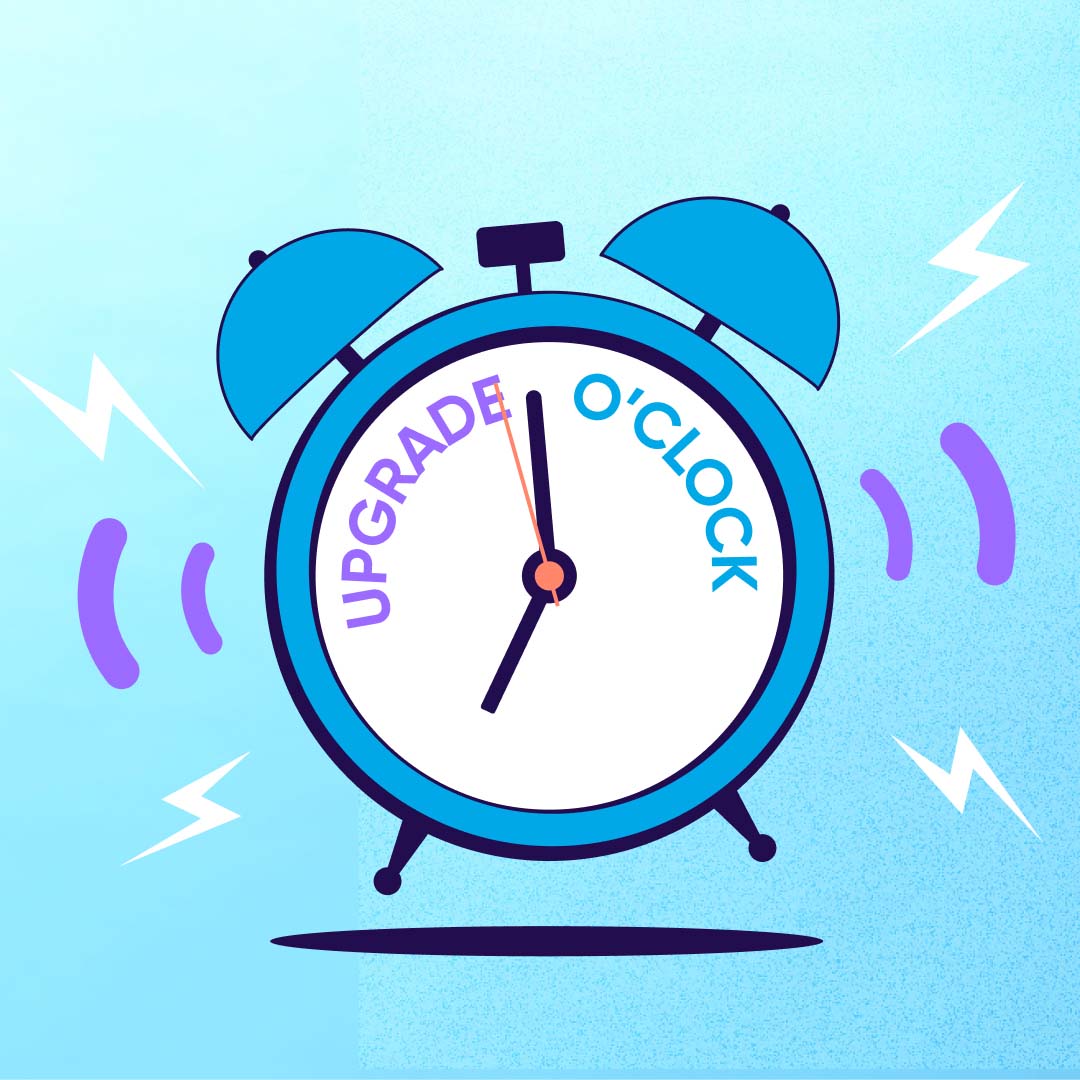
6 reasons why it’s time to upgrade your MMP

Data is, and always will be, worth its weight in gold (or platinum, or even Bitcoin at this point). But the gold rush is changing. Increasing privacy measures limit advertisers’ access to reliable data on user behavior. Meanwhile, as data becomes increasingly fragmented across channels and touchpoints, connecting the dots and achieving accurate measurement is a constant challenge for mobile marketers.
This is where Mobile Measurement Partners (MMPs) come in.
But not all MMPs are created equal, and if you’re reading this article you’re probably wondering if you made the right choice with yours.
Of course, as an MMP ourselves, we have a certain amount of skin in the game. We would tell you it’s time to switch, right? Well, we’re all about data-driven decision-making — so, we decided to analyze the real reasons people switch MMPs. After studying thousands of customer reviews across platforms like G2 and speaking with marketers who changed MMPs, we’ve identified the top 6 reasons behind this decision.
Reason #1: You have a data fragmentation problem
The first and most significant reason you need to change MMPs is because your data isn’t properly combined. If that’s the case, you’re flying blind.
While data fragmentation is not new, privacy restrictions and the signal loss they cause have made things much more complex. And if you can’t see the full picture, you could be throwing your money away on uninformed strategies.
For example, Apple’s SKAdNetwork (SKAN) and Google’s Privacy Sandbox offer a layer of privacy-first attribution, but their aggregated data creates gaps for advertisers who rely on more granular user insights. Imagine running an ad campaign and only receiving high-level performance metrics days later—this limits real-time optimization.
To make effective campaign decisions, you need to connect all your disparate data — SKAN values, MMP attribution data, consenting users’ data, Apple Search Ads APIs, TikTok, Meta, Google Ads, and ad network performance data – into a single source of truth.
A leading MMP like AppsFlyer will take a holistic approach, combining:
- Advanced modeling: Using probabilistic and deterministic modeling to fill gaps in existing data without compromising privacy
- New data signals: Leveraging top-of-funnel creative signals, enriched engagement types, and cross-channel data points
- Single Source of Truth (SSOT): Consolidating multiple data sources into one unified view – which can lead to a 29% lift in attributed installs, a 40% drop in eCPI, and a 62% surge in revenue attributed to marketing
This multi-faceted approach ensures reported numbers are accurate and actionable, even in an environment with diminishing user-level data.
Reason #2: Your MMP’s ROAS measurement isn’t cutting it
ROAS is a core metric for advertisers to understand, giving you a straight answer to the question, “Are my user acquisition investments paying off?” It sounds simple enough, so why is it so hard to measure it accurately?
Advertisers often struggle to understand the true cost of their campaigns because ad spend data is scattered across multiple media sources and platforms. Without automated cost aggregation, teams waste time manually collecting and consolidating this data, and risk working with inaccurate or outdated information.
MMPs like AppsFlyer offer a sophisticated cost aggregation tool that automatically centralizes all your ad spend data from multiple media sources into a single dashboard. This gives you a holistic view of your marketing spend across all channels and partners, enabling you to calculate true ROAS and make informed decisions about budget allocation. That way, you can quickly identify underperforming campaigns and optimize your ad spend for maximum efficiency.
If your MMP isn’t giving you reliable, consolidated cost data for accurate ROAS calculation, it could be a sign it’s time to switch.
Reason #3: Your MMP doesn’t offer strong enough fraud protection
Ad fraud causes the loss of billions of dollars annually due to invalid traffic, fake installs, and click spamming. If your MMP doesn’t have the best protection against fraud, your budgets might be going to fraudulent activity, leading to skewed performance metrics and potential revenue loss.
Every new channel that emerges is a fresh opportunity for fraud. For example, we’ve recently seen how generative AI has been amplifying fraud through connected TV and even streaming audio. The report states it contributed to a 23% increase in new fraud schemes in 2023. One specific case made the headlines with Michael Smith, who used bots to generate $10 million by boosting streaming numbers for AI-generated music.
Leading MMPs today are several steps ahead of the fraudsters, offering a combination of security features like cluster analysis, personalized validation rules, in-app fraud rules, and post-attribution fraud detection.
And partnering with a larger MMP, like AppsFlyer, is advantageous. With more data at our fingertips, as well as investment in cutting-edge data analysis and machine-learning capabilities, we’re able to identify more anomalies and emerging threats to your data security that can only be solved with our unique scale
Reason #4: Your MMP’s customer support is leaving you high and dry
Time is money when it comes to campaign success, so timely, local, and effective customer support is a must-have for MMPs. Issues like mismatched time zones, slow response times, or inadequate training can severely hinder your ability to deploy and optimize campaigns.
For instance, during a live campaign, a delay in resolving a technical issue could mean you miss a critical window to gather essential data, resulting in lost opportunities and inaccurate insights.
If you don’t get the right support from your MMP, you might not be making best use of its tools. This leads to wasted time and resources as you search for a manual solution.
Hearing from other customers is a great way to learn what kind of service your prospective MMP offers. For example, our customer success stories give you a flavor of the brands that trust AppsFlyer with their measurement and how we’ve helped them in practice.
You can also look at the resources an MMP offers — for example, you’ll find a wealth of learning materials and industry insights in our self-service Help Center and on our blog. Best of all, if you’re looking to make the switch, request a demo and ask how you’ll be supported through onboarding and beyond. You’re golden if they say they’ll provide you with a dedicated team of experts to ensure your success on the platform.
Reason #5: You don’t feel positive about your MMP’s product roadmap
Leading MMPs never stand still. They’re across all the latest industry developments (and those still on the horizon), proactively developing new and better ways to measure campaigns and support your growth as technology evolves.
Can you say that with confidence about your current MMP?
Take privacy changes, for example. Advanced MMPs offer custom SKAdNetwork solutions beyond predefined models, allowing more flexibility in measuring campaign success. Leading platforms also provide retroactive updates for post-install ATT consent and aggregated conversion modeling to address null values from SKAdNetwork. Additionally, they offer advanced conversion value modes for revenue event funnels or event frequencies that use less SKAdNetwork Conversion value capacity.
A truly future-proof MMP also uses advanced AI capabilities to transform how data is processed and analyzed. Advanced AI systems can process vast numbers of signals, identify patterns that humans miss, and automatically adapt to new privacy requirements or platform changes. Leading MMPs like AppsFlyer use AI to enhance:
- Signal recovery: Advanced machine learning models fill gaps in fragmented data, providing real-time insights even when direct measurement isn’t possible.
- Automated protection: Sophisticated algorithms continuously monitor for data inconsistencies or suspicious patterns, ensuring data quality and fraud prevention.
- Creative optimization: AI analyzes ad creatives to determine winning elements ranging from different actors to different CTA buttons, providing ROAS-boosting insights.
- Fraud protection: AI increases detection accuracy, catching and mitigating fraud at more efficient rates and with improved stability.
- Smart Data Consolidation: AI helps reconcile data from multiple sources, creating a more reliable single source of truth without manual intervention.
These forward-thinking efforts help advertisers maintain effective measurement capabilities even as the digital advertising landscape continues to transform.
Reason #6: Your MMP isn’t maximizing your first-party data opportunities
First-party data that comes direct from your own customers is prized as the most accurate and reliable. After all, it’s always best to get your information straight from the source. And it’s only becoming more valuable as privacy restrictions make it harder to access and share third-party data.
By collecting and managing your data across multiple channels, a strong MMP empowers you to build highly segmented custom audiences based on specific behaviors. You’ll also be able to develop lookalike audiences across major platforms like Meta, TikTok, and Google, as well as creating strategic exclusion lists. This foundation enables sophisticated paid remarketing that drives results.
Turning to third-party data (which is an opportunity based on someone else’s first-party data), your MMP should provide privacy-enhancing technologies for secure and compliant sharing. Top-tier partners like AppsFlyer offer data clean rooms for secure collaboration, enabling you to create highly personalized and contextual campaigns to maximize ROAS.
Without these capabilities, you’re missing big opportunities to maximize your first-party data value and drive more effective marketing outcomes in the privacy-first era.
Conclusion
Your choice of MMP can make or break your marketing campaigns and ROI. If your current provider can’t help you make sense of fragmented data, maximize your first-party data, or get a true picture of ROAS, you’re not getting value for money.
The MMP you choose should be future-proof, providing advanced solutions for SKAdNetwork, bullet-proof fraud protection, and privacy-compliant data analysis. It’s also critical to partner with a platform that offers excellent customer support, ensuring you get the most out of your tools and campaigns without missing key opportunities.
The next step is clear: evaluate your current MMP against the issues we’ve outlined and make an informed decision. Look for a partner that provides a single source of truth and continues to innovate and anticipate future privacy changes.
Don’t wait for your current MMP to hold you back—make the change now and find an MMP that will give you reliable data, ultimately worth its weight in diamonds.
Key takeaways
Working with an MMP you trust is vital for strategic marketing campaigns that drive growth. But it’s no longer enough for MMPs to just track basic metrics — they need to provide a holistic and privacy-safe picture of all your data, across your channels and devices, in an ever-changing environment.
If yours can’t deliver, then it’s time to jump ship. Here are the key reasons customers decide to switch MMP:
- They’re struggling to make sense of fragmented data in multi-channel campaigns
- They don’t have a clear picture of advertising costs or true campaign value, so inaccurate ROAS is hampering their decision-making
- Inadequate fraud protection is draining their budget and skewing results
- Poor customer support is causing costly delays in accessing and interpreting data
- Their MMP is too slow to respond to industry shifts and technical developments
- They can’t get the most from their first-party data
If any of these sound familiar, AppsFlyer could be the solution. Book a call with us today to talk through your current challenges and discover how we could help you achieve your goals.




